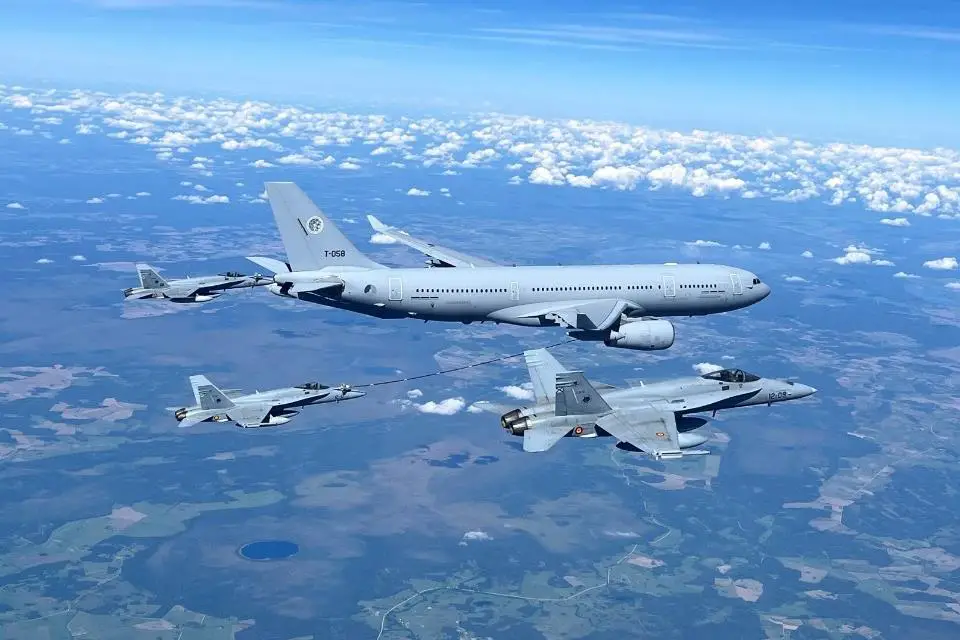NATO Allies conduct training mission over the Baltic Sea, August 15, exercising integration and enhancing capabilities in the air domain. Four Spanish Air Force’s F-18s from the enhanced Air Policing detachment at Mihail Kogălniceanu Air Base, Romania, linked up with Italian Eurofighters, Swedish Gripens, and Finnish F-18s to train together in a common airspace. The Italian Eurofighters are currently based out of Šiauliai, Lithuania, and are part of a four-month NATO Baltic Air Policing deployment. A Spanish Army surface-to-air missile (SAM) detachment also participated in the exercise, allowing NATO Allies to train together and collaborate on the Alliance’s eastern flank.
Additionally, given the distance for the Spanish F-18s to fly from Romania to the Baltics, the Spanish fighters were refueled on multiple occasions on their journey by an Airbus 330 Multirole Tanker Transport aircraft from the Netherlands Royal Air Force. The air-to-air training mission was controlled by the Control and Reporting Centre (CRC) located in Lielvarde, Latvia, supported by interception controllers from the Latvian Air Force. The exercise demonstrated NATO’s unified deterrent presence on the Alliance’s eastern flank, enhancing force capability and availability for ensuring air superiority. The air policing detachments working together also provided pilots tactical training in different airspaces, testing their proficiency alongside Allied Air Forces.

Following Russia’s full-scale invasion of Ukraine in February 2022, Allies reinforced the existing battlegroups and agreed to establish four more multinational battlegroups in Bulgaria, Hungary, Romania and Slovakia. This has brought the total number of multinational battlegroups to eight, effectively doubled the number of troops on the ground and extended NATO’s forward presence along the Alliance’s eastern flank – from the Baltic Sea in the north to the Black Sea in the south. The eight battlegroups demonstrate the strength of the transatlantic bond and the Alliance’s solidarity, determination and ability to respond to any aggression.
Allied presence on NATO’s Eastern Flank serves as a deterrence and defence measure for securing Allied airspace. An important component of NATO’s deterrence and defence posture is its military presence in the eastern part of Alliance territory. In recent years, Allies have enhanced NATO’s forward presence by establishing multinational battlegroups in Bulgaria, Estonia, Hungary, Latvia, Lithuania, Poland, Romania and Slovakia. They have also sent more ships, planes and troops to NATO’s eastern flank, from the Baltic Sea in the north to the Black Sea in the south. These actions demonstrate Allies’ resolve and readiness to defend Alliance territory and populations.
















